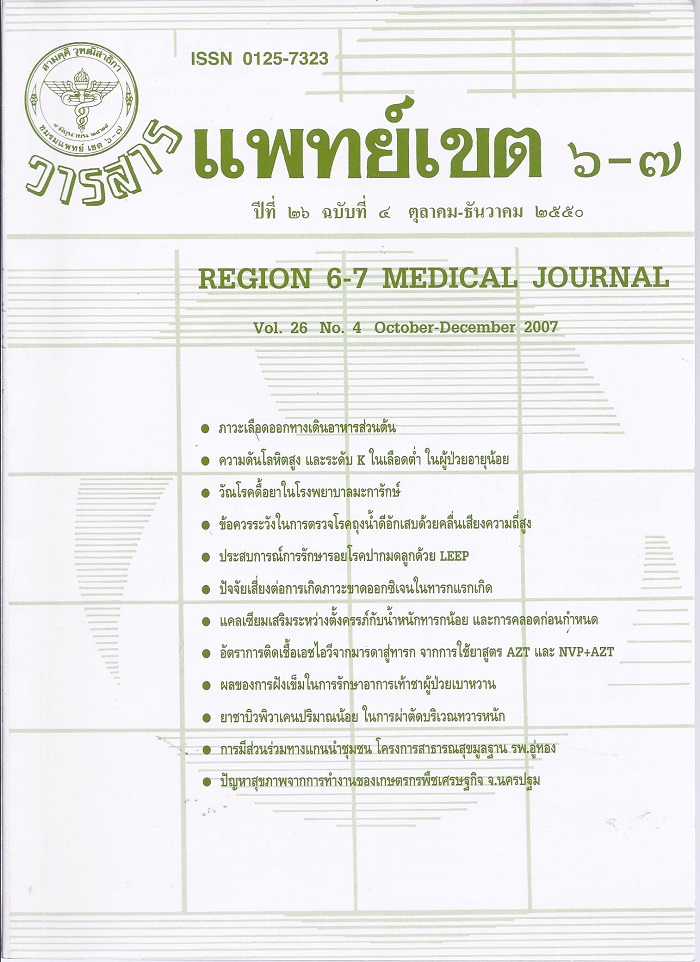ปัจจัยเสี่ยงต่อการเกิดภาวะขาดออกซิเจนในทารกแรกเกิดในโรงพยาบาลสมเด็จพระพุทธเลิศหล้า
คำสำคัญ:
Birth asphyxia, Risk factorsบทคัดย่อ
Objective : To study factors which may caused birth asphyxia and to reduce birth asphyxia rate.
Research method : Retrospective survey study
Subjects : Gestational age 28 weeks or above of pregnant women who were admitted to labor room of Somdejpraputhalertla Hospital between October 1, 2003-September 30, 2006. These pregnant women delivered asphyxia newborns (Apgar score at 1 min ≤ 7).
Results : Total of 5,218 pregnant women, 133 of them delivered asphyxia newborn. The prevalence of birth asphyxia rate is 33.7, 29.5, 14.8 : 1,000 live birth in 2004, 2005, 2006 year’s, respectively. The risk factors . which may caused birth asphyxia included general and maternal factors, most of them were 76.7% of 18-34 years old. 72.9% were 37-41 weeks of gestational age, 61.7% is nulliparity, 84.9% good ANC in Somdejpraputhalertla Hospital. Pre-delivery factors, most ofthem (62.4%) had no risk factors. In risk factor groups, 18% iron deficiency anemia, 5.3% previous cesarean section. Labor factors, most of them (77.4%) had risk factors, 55.6% medical induction of labor, 6.0% magnesium sulfate were used, and 6.0% analgesic (pethidine) were used. Newborn factors, most of them (68.8%) had 2,500 - 3,999 gram body weight, 39.0% had clear amniotic ‘ fluid and 15.8% had thick meconium stained amniotic fluid.
Conclusion : Good antenatal care and early detection of risk factors by risk screening system, partograph and electronic fetal monitoring used, good resuscitation team can reduce birth asphyxia rate.
ดาวน์โหลด
เผยแพร่แล้ว
รูปแบบการอ้างอิง
ฉบับ
ประเภทบทความ
สัญญาอนุญาต
ลิขสิทธิ์บทความเป็นของผู้เขียนบทความ แต่หากผลงานของท่านได้รับการพิจารณาตีพิมพ์ลงวารสารแพทย์เขต 4-5 จะคงไว้ซึ่งสิทธิ์ในการตีพิมพ์ครั้งแรกด้วยเหตุที่บทความจะปรากฎในวารสารที่เข้าถึงได้ จึงอนุญาตให้นำบทความในวารสารไปใช้ประโยชน์ได้ในเชิงวิชาการโดยจำเป็นต้องมีการอ้างอิงถึงชื่อวารสารอย่างถูกต้อง แต่ไม่อนุญาตให้นำไปใช้ในเชิงพาณิชย์




